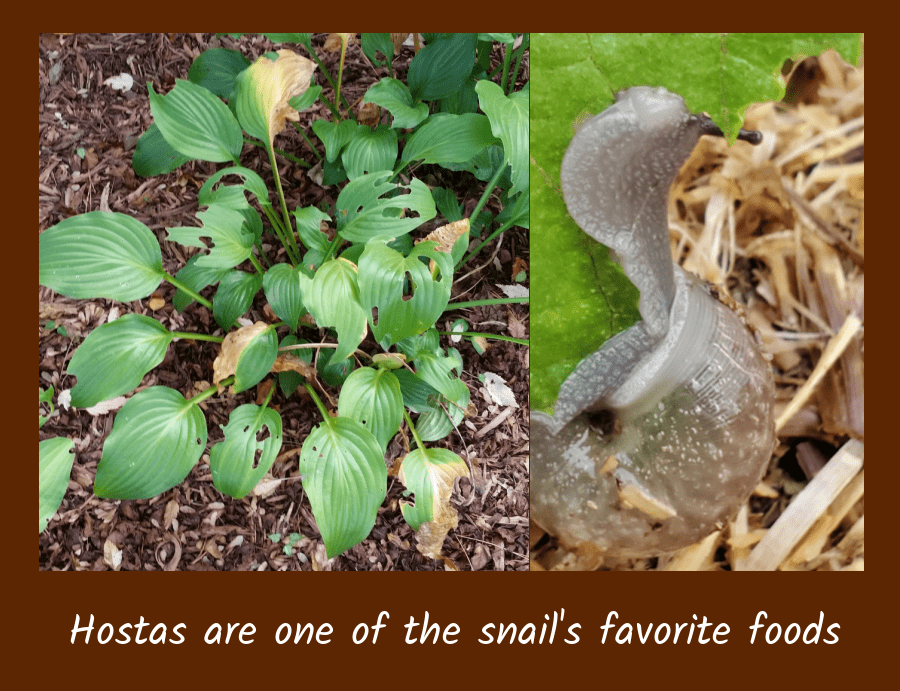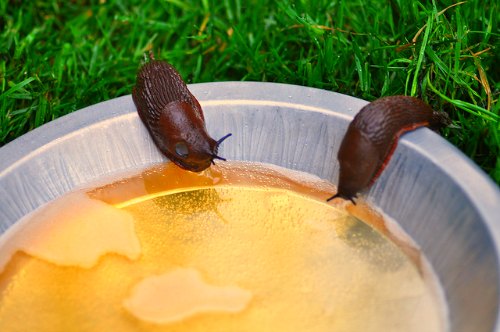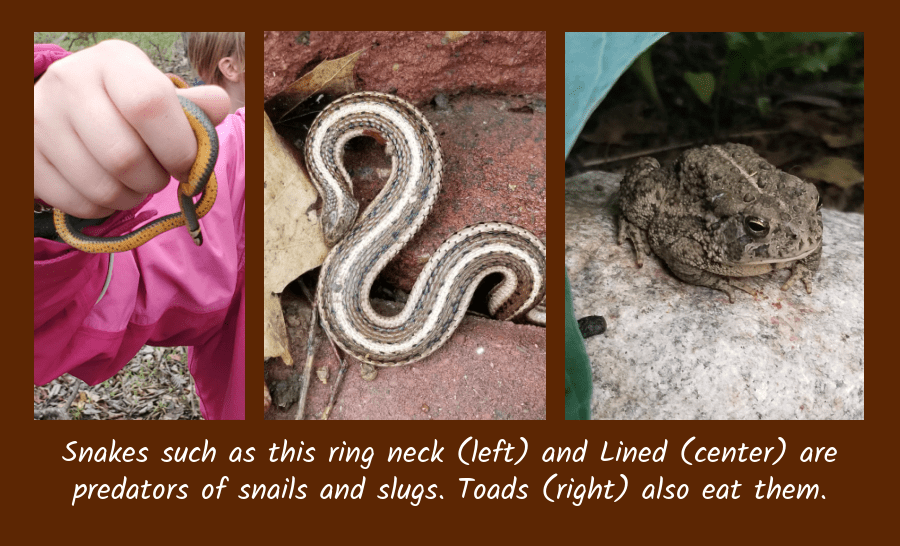One of my biggest nemeses in the garden are slugs and snails. These land roving mollusks are distant cousins to octopi and squids. But unlike them, slugs and snails are a problem in our gardens, instead of being beautiful sea creatures. But, just like the rest of God’s creatures, they play a role in the ecosystem, and us gardeners have to work with or around them.
Many gardeners goals include total death to all pests, whatever the cost. But I like to use things that not only complement or add to the garden, but are completely safe for my kids or I to walk through the garden barefoot. Dealing with slugs and snails means that I have to think outside the box in a way which will not affect other invertebrates. Because I love all the insects I see.
Types of Snails and Slugs
In North America, there are approximately 725 species of snails and 40 species of slugs. Here in the Central Great Plains, numbers are harder to figure, with the varied kinds of habitats we have, from prairies to forests to farmland. Here in Kansas, we have 67 species of snails and 3 species of slugs.
What They Eat
Snails and slugs feed on a wide variety of plant materials, both dead and alive. Some of the hardest hit plants in our gardens include lettuce, basil, hostas, strawberries, kale, spice, daylilies, dahlias, and mushrooms. I have also found white globe-lipped snails feeding on trees including maples, hackberry, and hickory on the edges of my garden.

Controlling Slugs and Snails
There are so many ways in which you could nearly eliminate the snails and slugs in the garden, but at what kind of cost? I prefer to use organic, safe methods. When it comes to reducing or controlling the number of slugs and snails in the garden, a multiple pronged attack is the best method. A mixture of tactics will reduce the number of slugs and snails.
In the Vegetable Garden
Here is where I would do a little more to reduce the overall number of slugs and snails. In my garden in 2022, I had a big problem with snails eating my green beans a marigolds in my raised beds. For vegetable gardens, I would like to use the least toxic methods to protect the overall health of my crops, and in turn, my family.
Barriers
This is the place to employ barriers to keep the slugs and snails from even reaching my crops. Barriers should be placed around the threatened crops in at least a 4 inch wide band. Although I will likely use a 6 inch wide band of barrier. The most recommend barriers are of crushed eggshells, coffee grounds, or DE.
What is DE? Diatomaceous earth is a crushed fossilized diatoms, mostly from the ocean floor. They are used in a wide range of applications from pest control to cleaning. They have small, sharp edges which rip through insect bodies.
Barriers are not foolproof, the slugs and snails can get through them, but at the cost having their bodies ripped to shreds. Eventually, crossing the barriers will kill them. So, if their hiding place (under board, in crevices, under leaves) is beyond the barriers, the return journey may kill them. One of the problems with barriers, especially DE, has to be reapplied often, after rain or a heavy dew.
Large Predators
This is where it can get tricky. Ducks and turkeys are known to be major pest predators, and are often used in garden situations. But, they can also go for your plants as well. I do not recommend using either chickens or geese, as they will go after your plants. Ducks and turkeys however, have a tendency to go for bugs and insects more so over plant material. If they can reach into the bed, I would allow both my ducks and turkeys in, in mid-morning, after the dew is off and the pests come out. But I would not leave them to themselves, but stay in the garden with them.
Controlling Snails and Slugs in the Flower Garden
Now to the flower garden. Here, there are a few broader options for controlling them. However, I still would refrain from using toxic poisons to kill slugs and snails, because the dead may be eaten by other insects and then birds and animals, thus killing them too.
Bait
The best type of bait is beer. Yes, your favorite end of the day drink will easily drown those pesky slugs and snails. Just place a bowl shallowly into the soil and pour in the brew. The yeast in the beer will attract the snails and slugs and they will drown trying to get the treat. This is a well-known and tried and true method. The only downside is that you must empty the bowl and refill it regularly. Which of course, is not much different than using barriers, which work here too.

Small Predators
Because we really cannot let loose ducks and turkeys in the flower garden, we have to rely on other predators for control. These include toads, frogs, small snakes, beetles, and birds. Attracting all of these to the garden involves a permanent plan for the garden, and not an everyday movement like with the baits and barriers.
I have gone intensively into attracting birds to the garden, involving planting of native trees, shrubs, and perennials. Also, the building of habitat, adding brush piles, and leaving snags.
What is a snag? A snag is a standing dead branch or tree which has the potential to be a home for cavity nesting birds such as chickadees, tufted titmice, owls, and various woodpeckers.

Attracting snakes and toads to the garden may freak out some readers, but small snakes like Dekay’s brown, lined snake, garters, and ring necks are quite harmless to you and deadly to the pests. The easiest way to attract them is to provide cover. A laid down piece of tin, plywood, or pile of small logs will attract and protect them. I like to leave fallen logs in the garden beds just for them. For a toad, place a toad house made from some broken pottery or half-buried cement block near your problem areas.
Conclusion
Controlling slugs and snails in the garden safely for you and your family is easier than you would initially think. And you can help provide habitat for creatures that do the work for you. In the vegetable garden, an arsenal of barriers and birds can eliminate most of your slug and snail pressure.
Happy planting!





Thanks for the great information Andrew.
You’re welcome!